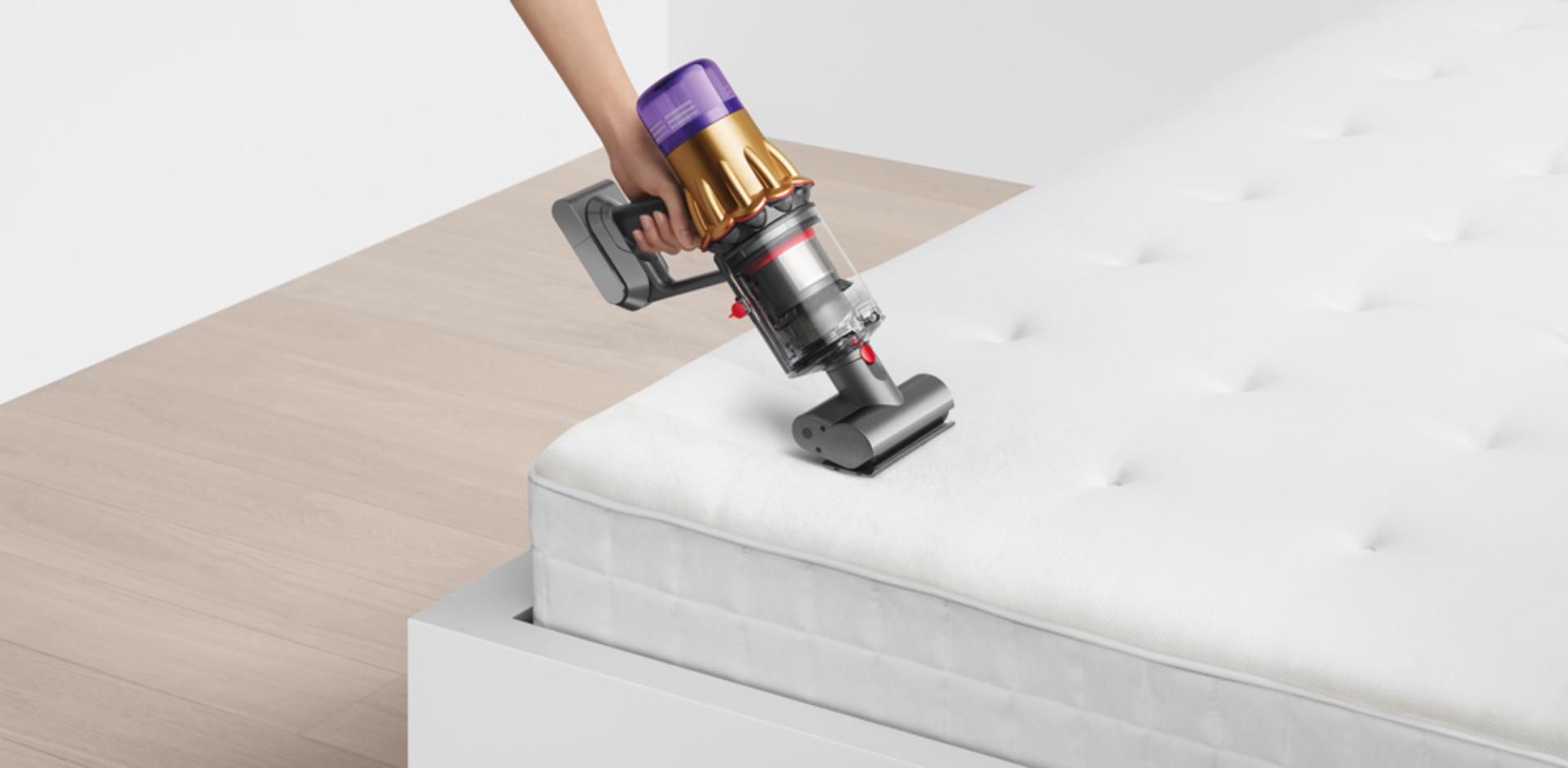
How to clean your mattress
Studies reveal that people spend one-thirds of their lives in bed1, and as people spend more time at home as a result of the pandemic, one can only imagine that this number has since increased. However, mattresses tend to be overlooked when it comes to cleaning the home.
30 June 2022
Dyson Microbiologist debunks common myths around cleaning your mattress
The Dyson Global Dust Study2 reveals that just over 3 in 4 people (76%) do not vacuum their mattresses regularly. A typical mattress may have around 100,000 to 10 million dust mites, and a single dust mite produces about 20 waste droppings a day3 which is a common allergy trigger.
“Dead skin cells shed by humans and pets are the main source of food for dust mites” says Joanne Kang, Lead Research Scientist at Dyson. “It is therefore not surprising that mattresses, where we spend the most time and where dander tends to accumulate, is a prime breeding ground for dust mites.”
-
Watch our video to learn more about what's in your mattress
-

A typical mattress may have around 100,000 to 10 million dust mites
Common mattress cleaning myths
Joanne shares four common misconceptions that people have around mattress cleaning:
Myth 1: Mattresses Do Not Need to be Cleaned
Mattresses are one of the most commonly overlooked areas when cleaning the home, with the Dyson Global Dust Study revealing that 76% of people do not clean their mattress regularly. However, all it takes is for a single female dust mite to get into your mattress and start laying eggs and your mattress turns into a dust mite breeding ground.
Dust mites can find their way to your mattress by clinging onto your clothes, or even your pet. As they feed on dead skin cells that we shed naturally, and as the human body emits the humidity that allows dust mites to thrive in, mattresses are a hot spot for the proliferation of dust mites.
Myth 2: Using Mattress Protectors and Regularly Washing of Bedsheets is Enough
Using bedsheets and mattress protectors to cover your mattress and regularly changing and washing them is a good way to keep your mattress cleaner. But it is not enough to rely solely on this to keep your mattress clean.
Textile materials, like bedsheets and mattresses, are porous in nature. Add the microscopic nature of dust to the equation and they fail to form an impenetrable filter and dust, dead skin flakes, dust mites and other microorganisms still enter your mattress.
Myth 3: Steam Cleaning the Mattress helps to Get Rid of Dust Mites
The two common steam cleaning temperatures are 121-degree Celsius and 132-degree Celsius which is enough to kill bacteria on various surfaces.4 This then begs the question – how effective is it at removing dust mites from your mattress?
When a steam cleaner is turned on, it heats the water beyond the boiling point, releasing heated vapour out of the attachment that is passed over the surface that you are looking to clean. However, vapour condenses back into water when it comes into contact with a cooler surface which explains the dampness of the surface after steam cleaning.
The average mattress is between eight to 12 inches in height5 and can take up to 24 hours for them to be fully dry. Dust mites thrive in damp and dark conditions and a damp mattress creates a favourable environment for dust mites’ proliferation and may even result in the growth of mould.
With mattresses being as thick as they are, it also means that steam cleaners, which are efficient at disinfecting different surfaces, are unlikely to reach and kill the dust mites that have embedded deep into the mattress. Moreover, steam cleaners merely kill the dust mites which means that you may be sharing your mattress with hundreds of thousands of dead dust mites.
Myth 4: UV Devices are Effective at Cleaning Mattresses
UV light has been used to sterilize areas and reduce the pathogens since the 1900s, and this method of sterilisation has grown in popularity over the years. The ongoing pandemic has also renewed people’s interest in using UV light to sterilise rooms.6
As ultraviolet germicidal irradiation (UVGI) systems are now more easily accessible, they have also become much cheaper and are available in different consumer devices to sterilise various household items from mobile phones to mattresses. However, studies have shown that long exposure times up to one hour and near distances are required to kill adult dust mites effectively.7
Given the thickness of mattresses, the killing effect of UVC exposure would be limited to the top portion of the mattress as the UV light is unable to fully penetrate through the mattress. Moreover, the material of the mattress can affect the cleaning ability of UV devices as it casts shadows within the mattress which may nullify the effect of UVC killing.
At Dyson, our research has shown us that the best way to tackle dust and its hidden components is to remove them from your home completely. Read on for some quick mattress cleaning tips from our Microbiologist.
Dyson Newsroom
The latest news from Dyson
Press Contact
ANZ Press Office
Email: aupressoffice@dyson.com
 Call us
Call us Email us
Email us Request a meeting
Request a meeting Live chat
Live chat